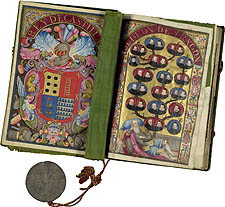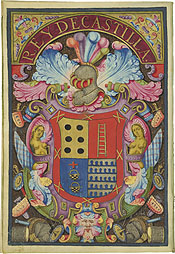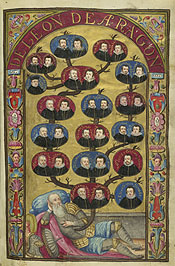Charter of Nobility
![]()
Even as late as the 17th century, certain texts recommended themselves
to the craftsmanship of scribes rather than the machines of the printers.
This Spanish charter of nobility, lavishly crafted in 1636, was too dignified
a text to entrust to mechanical means of production. Furthermore, it was
bestowed too seldom to justify mass production. Thus, even more than a
hundred years after the close of the Middle Ages, the skill of scribes
and illuminators came together to produce this marvelous book at the command
of the Spanish king. His seal of office, impressed upon the leaden pendant,
validates the charter.
![]()
Charter of Nobility. Spain, 1636.
![]()

Copyright
© 2002 Division of Rare & Manuscript
Collections
2B Carl A. Kroch Library, Cornell University, Ithaca, NY, 14853
Phone Number: (607) 255-3530. Fax Number: (607) 255-9524
For
reference questions, send mail to:
rareref@cornell.edu
If you have questions or comments about the site, send mail to: webmaster.


